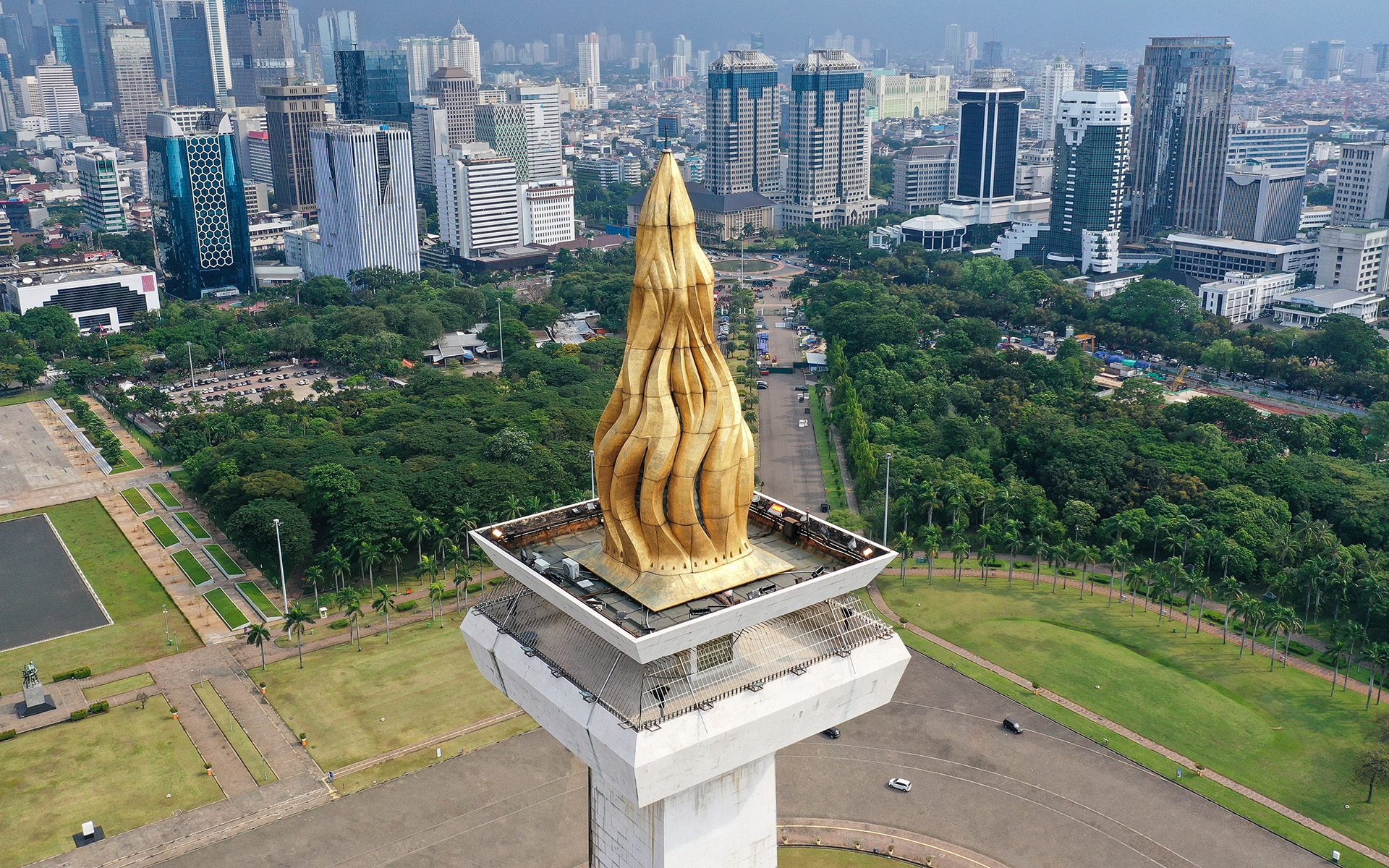Jakarta plays a dominant role as Indonesia’s commercial hub and will benefit further from regional growth rebalancing. But climate risks are real.
City Class Score
| Commercial Hubs | |
| Export Champions | |
| Mobility Connectors | |
| Climate Resilient |
Corporate HQs, MNC presence, branded outlets, hotels, manufacturing, start-up ecosystem,
transport linkages, population, and income.
Go to the class information
Manufacturing, industrial parks, export share and share change by category, air and port
infrastructure, freight time to market, trade agreements, and expert interviews.
Go to the class information
Passenger traffic, flight connectivity, air-cargo flights, port infrastructure, container
ship sailings, and major road networks.
Go to the class information
Coastal and river flooding, extreme rain, extreme heat and humidity, cyclones, and water
scarcity.
Go to the class information
Jakarta’s National Monument, a striking white obelisk in the city’s center, is
both a proud symbol of independence and an oasis of calm amid bustling traffic. The city, home to
more than 15 million people, is Southeast Asia’s largest, and has grown so significantly that the
country is building a new capital 1,300 kilometers away on the island of Borneo. First-time visitors
might feel overwhelmed by the traffic, but they will soon discover a vibrant food scene. From street
food offerings like nasi goreng and gado-gado to high-end dining nestled within colonial-era
architecture, Jakarta’s culinary landscape showcases the diverse traditions of its many ethnic
groups. It also highlights the city’s importance as a national hub, from food to business.
Jakarta’s role as a commercial powerhouse is poised to benefit significantly from several
megatrends, including the rebalancing of regional and global growth and shifting global supply
chains. For instance, while Japanese companies have scaled back their investments in China, they
have continued to expand their activities in Indonesia, particularly in Jakarta. This trend holds
true for other regional and global players as well. Indonesia’s strong economic growth, large labor
force, and abundant critical mineral resources are just a few reasons this global middle power is
set to shine. However, the city also ranks low on climate resiliency measures.
Jakarta’s
status as a commercial hub is due to its dominant role in a country of over 280 million people,
including numerous cities with populations exceeding 250,000. Despite the country’s size, the city’s
commercial activity far surpasses that of other domestic contenders, such as Surabaya. Jakarta
boasts four times the number of listed companies compared with all other domestic cities combined.
The city also has more global retail and luxury goods outlets than the rest of the country, based on
our data. This contrasts with cities like Ankara or São
Paulo; while both rank highly across various commercial measures, they do not reach the same
level of national dominance as Jakarta.
However, this dominance brings challenges. Jakarta
grapples with congestion, pollution, and gradual sinking that leaves nearly half the city below sea
level. The government recognizes these challenges and is working to rebalance growth. The shift in
global supply chains will aid this effort, as neighboring cities like Semarang and Batam gain
importance, with manufacturing indicators already showing some success. Nevertheless, Jakarta’s
container ports and air cargo infrastructure will ensure the city and region remain central to the
country’s industrial growth and retail landscape.

